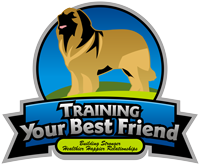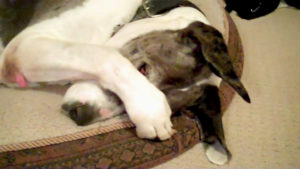
Training Tips For Teaching Your Dog To Walk On A Leash
-
Teach Impulse Control
Puppies tend to be enthusiastic about the world; they have a hard time not approaching every new thing with gusto. This behavior can make taking a walk with you – a slow human who walks in a straight line at a leisurely pace – very challenging for your pooch! Start teaching your dog the idea of delayed gratification: waiting for a treat rather than grabbing it or not jumping out of the car until invited. These activities teach overall patience, which will transfer to being restrained on a walk. Remember, when we take dogs on walks, they are excited! Being under control is difficult for them and is a skill they must master.
-
Use a Harness While Training
Flat collars can damage the neck of a dog that pulls on a leash, and do not give you enough control when walking your pooch. Harnesses distribute your dog’s weight over a larger section of their body, making it safer for your dog and giving you much more control. Once your dog masters the art of walking on a leash, you can move to a flat collar and leash for quick walks, if you want. Note that a harness is never a substitute for a collar. Always have your dog wear a collar with ID!
-
Exercise Before You Walk
Many of us think taking our dogs for walks is good exercise for them. However as we noted earlier we move much more slowly than they do! It is important to take your pooch on a walk, so they can get out, see the world, and sniff interesting things. However it does not really allow them to burn off a lot of energy. Start your walk by doing a vigorous activity your dog loves in a safe environment, like your back yard, playing fetch, running through the yard or sprinkler, or running after a toy before you ask them to control their energy on a walk.
-
Teach Your Dog Good Walking Techniques
For an untrained pooch, taking a 2 mile walk is equivalent to taking a college level class. Your toddler-level dog will not be able to master this skill without some help! Begin teaching your pooch good walking techniques by playing a game of running away from him or her, off leash, in your fenced yard. Your dog will follow you of course, and when they arrive on your left side, give a treat. Play this game a lot. It’s fun for the dog and teaches that the best place to be is right by your side. Next, put a leash on him/her and practice the same game with the leash on by holding it as you play, giving him/her a treat when they are not pulling. You are rewarding your dog for good walking behavior; being on your left side with a slack leash. Next, try taking a walk around your driveway. Then, one block. Then, two. Allow your pooch to slowly master each skill before he or she graduates to college level walking.
The key to training your dog to walk on a leash is taking a progressive approach: make the task a little more difficult over time. Yanking back on a pulled leash is not a helpful exercise. The idea is to teach your dog what you want them to do rather than to continuously stop them from doing what you do not want them to do. Once a pooch understands and masters what is expected during a walk, everyone involved will have a much better experience.





